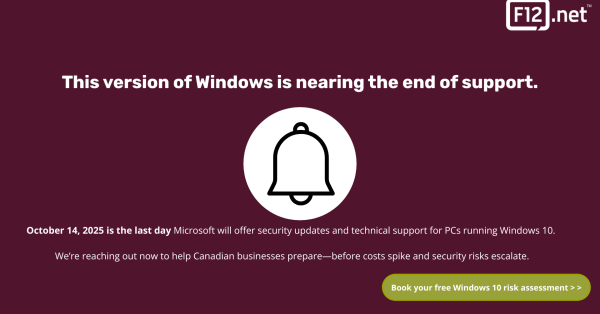Brief: Canadian SMBs are in a double bind: cyber‑attack volume keeps climbing while Bill C‑26 nears royal assent, promising tougher disclosure rules and steeper fines. The average breach now drains CA$6.32 million from a Canadian balance sheet (IBM Canada 2024)—well above the global mean of US$4.88 million (IBM Global Cost of a Data Breach 2024). Most incidents still begin the old‑fashioned way—humans clicking rogue links—while Gartner warns that 99 percent of cloud‑security failures through 2025 will be the customer’s fault (CIO / Gartner).
This article unpacks a People–Process–Technology playbook, shows where Pen‑Testing‑as‑a‑Service (PTaaS) fits in, and explains how F12 helps you fix gaps before attackers exploit them.
“A strange game. The only winning move is not to play.” — WOPR super‑computer, WarGames (1983)
The cybercrime reality check
IBM’s latest report pegs the global average breach at US$4.88 million, while Canadian firms swallow CA$6.32 million per incident (global, Canada). Nearly 80 percent of all reported security incidents still start with phishing, malware, or web exploits (Keepnet Labs / CSO Online 2024). KPMG adds that three‑quarters of Canadian SMBs suffered cybercrime in 2024, up almost 10 points on 2023 (KPMG Canada press release 2024). Against that backdrop, “good enough” protection is a false economy.
1. People — turn your workforce into the first line of defence
Proofpoint’s 2024 State of the Phish shows 68 percent of employees knowingly take risky actions—password reuse, clicking unknown link —when pressured for speed.
F12 hard‑wires security culture through:
- Continuous micro‑learning & simulated phishing tuned to each user’s behaviour.
- Role‑based access so finance can’t see HR data and interns can’t dump production databases.
- Psychological safety: staff report mistakes immediately without fear, slashing containment time.
2. Processes — governance that survives the Monday‑morning rush
Well‑written policies mean nothing without muscle memory. Robust processes translate Cyber Security intent into daily action:
- Data classification: tag assets as public, internal, confidential, or regulated so controls scale with sensitivity.
- Embedded risk scoring: every department assesses Cyber Security impact before approving vendors or new tools.
- Incident‑response runbooks: pre‑approved steps shave days off breach lifecycles—critical when Bill C‑26 fines can start within hours.
- Quarterly PTaaS validation: scheduled penetration tests prove policies work in the real world.
3. Technology — right‑size the stack, then configure it perfectly
Most breaches happen not for lack of tools but because the tools are misconfigured. Gartner estimates that 99 percent of cloud‑security failures through 2025 will be the customer’s fault (CIO / Gartner).
F12’s SOC engineers start with a rationalised stack, then lock it down:
- Zero‑trust segmentation to stop lateral movement even after credential loss.
- 24 × 7 Canadian SOC that hunts anomalies and validates alerts—no more dashboard fatigue.
- Automated patch orchestration to seal known holes inside strict SLA windows.
- Penetration Testing‑as‑a‑Service (PTaaS): continuous, full‑spectrum tests run by Canadian experts feed findings straight into remediation queues. The PTaaS market is booming—valued at US$118 million in 2024 and forecast to hit US$301 million by 2029 (Markets & Markets 2024).
Bringing it all together
Risk lives where people, processes, or technology fall short. F12 integrates all three—training humans, operationalising governance, and engineering iron‑clad tech—under one scalable subscription. You get predictable op‑ex today and the freedom to bolt on new controls (like PTaaS) as your business grows.
Ready to surface—and fix—the weak spots attackers hunt for?
Book a complimentary Cyber Security posture review (including a PTaaS scoping session) and receive an actionable roadmap aligned to Bill C‑26 readiness—no obligation, just clarity.
Frequently Asked Questions: Cyber Security for Canadian SMBs
Q: What’s the average cost of a data breach in Canada?
A: IBM’s 2024 study puts it at CA$6.32 million, compared with the global average of US$4.88 million (IBM Canada /IBM Global).
Q: Is phishing still the biggest threat?
A: Yes. Industry data shows phishing, malware, and web exploits collectively drive about 80 percent of reported incidents (Keepnet Labs / CSO Online).
Q: Will Bill C‑26 affect my mid‑sized firm?
A: Directly if you’re classed as critical infrastructure; indirectly via supply‑chain and insurer pressure for proof of compliance (Bill C‑26 text).
Q: Can technology alone keep us safe?
A: No. Gartner forecasts that 99 percent of cloud‑security failures will stem from customer misconfigurations, underscoring the equal importance of people and process (CIO / Gartner).
Q: How often should Canadian SMBs run penetration tests?
A: PCI DSS calls for annual testing at minimum, but Gartner and leading regulators recommend continuous or quarterly PTaaS for dynamic cloud workloads—cutting risk and often lowering cyber‑insurance premiums (Markets & Markets).


